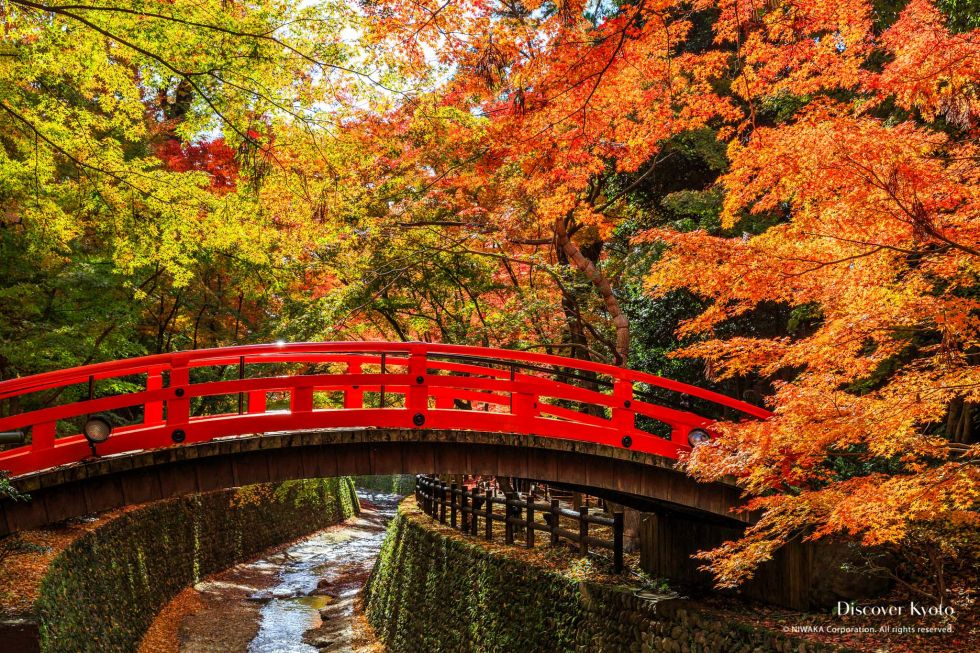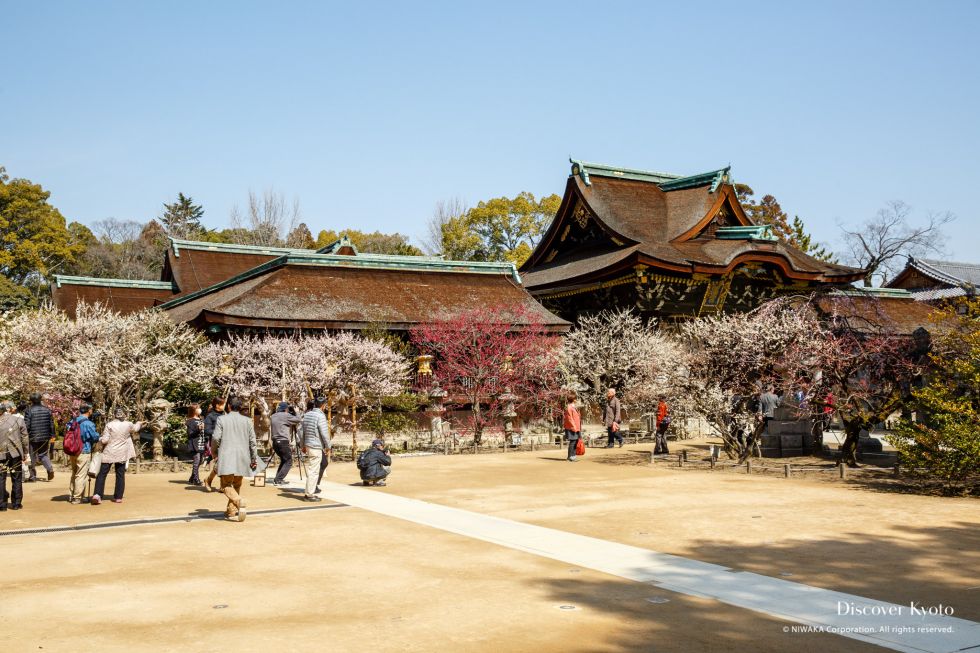Northwest Kyoto

Made up of some of the most visited spots in the city, northwestern Kyoto is home to the famous Golden Pavilion, Kinkaku-ji, as well as the famous Zen rock garden at Ryōan-ji. However, there are numerous other temples and shrines just a short walk or bus ride away from these popular sights, and you would be remiss to skip them if you’re in the area! Offering everything from glittering gold and the stark simplicity of a Zen garden to the seasonal beauty of plum and cherry gardens and the enduring stalwartness of Buddhist statuary, this slightly removed area of Kyoto is just waiting to be properly explored!

Ryōan-ji

Ryōan-ji is home to one of Japan’s most famous rock gardens, a cultural heritage site that attracts visitors from all around the world every day. Originally the temple was an aristocrat’s villa during the Heian Period, but it was converted into a Zen temple in 1450 by Hosokawa Katsumoto, who was a top-ranking warlord in the Ashikaga Shogunate. Although the rock garden at Ryōan-ji takes the spotlight, the temple offers other beautiful gems such as the Kyōyōchi Pond in its residential-style leisure garden, as well as the beautiful paintings and artifacts in the Abbot's Quarters. In 1994, this temple was designated as a World Heritage Site by UNESCO.See more

Ninna-ji

Ninna-ji, a sprawling temple complex in northwestern Kyoto a walkable distance from nearby Ryōan-ji and Kinkaku-ji, is the head temple of the Omuro school, part of the Shingon sect of Buddhism. Founded in 888 and designated as a World Heritage Site in 1994, the temple grounds are home to a special breed of cherry trees called omuro sakura, fascinating architecture, beautiful gardens, and an interesting hiking course. Because of its long history as a temple receiving imperial patronage, Ninna-ji possesses many National Treasures and several Important Cultural Properties, and in addition to more traditional Buddhist worship halls also has the Goten, constructed in a lavish residential style worthy of the name “Omuro Palace” that shows how emperors of old would have lived.

Kitano Tenmangū

Dedicated to Tenjin, the god of learning, Kitano Tenmangū is a popular destination for those wishing to pray for success in scholarship and studies. Tenjin was once a man named Sugawara no Michizane who was an accomplished statesmen, poet, and scholar before he fell out of favor and was banished from the capital, dying in obscurity. When disasters began to strike Kyoto after his death it was determined that his wrathful spirit was the cause and he was deified in order to pacify his anger. Kitano Tenmangū serves as the head shrine for the various Tenjin shrines throughout the country, and is definitely worth the visit - even more so if you have an aspiring scholar among you. Cattle are considered the messengers of Tenjin, and statues of them dot the shrine grounds. The main gate is a beautiful construct, and within the grounds are famous groves of plum trees, said to be Michizane’s favorite. The central inner gate and main hall of the shrine are decorated with wood carvings and golden lanterns, and it is especially busy around exam time and plum blossom season in late winter. Be sure to check it out when you’re in the area or in need of some help on a test or scholastic pursuit!See more

Myōshin-ji

A Rinzai Zen temple complex in northwestern Kyoto containing forty-six sub-temples, Myōshin-ji is known in Kyoto for its dedication to zazen meditation, its status as a Rinzai Zen branch head temple, a stellar ink painting of a dragon in the Hattō Hall, and its shukubō (temple lodging) experience. Walking through the paths of the temple leads you pass countless small sub-temples in their own walled areas, some open to the public with their own treasures and lovely points, and others kept private or only open for special ceremonies. Despite its somewhat austere exterior, the interior of Myōshin-ji’s halls are covered in gorgeous artwork and steeped in history just waiting to be explored by the Zen enthusiast. See more

Imamiya Jinja

A shrine with a thousand year history, Imamiya Shrine has a reputation when it comes to prayers for good health and recovery from illness. Located in northwestern Kyoto, this Shinto shrine is famous for hosting the Yasurai Festival in April and the Imamiya Festival in May, prayers for good health, and its purportedly magical stone that can predict if your wishes will come true or not.
The path to the shrine’s magnificent two-story gate is lined with ginkgo trees that turn a brilliant yellow in the autumn, and the grounds contain numerous interesting features just waiting to be discovered. True to the history of shrines as gathering places for the community, Imamiya Shrine is very much involved in the lives of the locals who live around it.

Kenkun Shrine

Kenkun Shrine is a Shinto shrine on the top of Mt. Funaoka, a small mountain in northwestern Kyoto said to be the domain of Genbu, the tortoise guardian of the north. Kenkun Shrine enshrines Oda Nobunaga, the 16th century warlord who aimed to unify the country of Japan under one banner and helped see an end to the Warring States period in Japan. A short hike will take you to the main shrine area at the summit, which was built in the late 1800’s by decree of Emperor Meiji. The view from the shrine of Kyoto city spread out beneath the mountain is worth a look, and fans of Japan’s Warring States period will be interested in the shrine’s origins.See more

Genkō-an

A small temple located in northwest Kyoto, Genkō-an is a Soto Zen temple that is famous for its rather strikingly original windows. People come from all over Kyoto and abroad to sit in front of the “Window of Confusion” and the “Window of Enlightenment” in quiet contemplation. With a history spanning centuries, a somewhat macabre draw of the temple are its so-called “bloody ceilings”, which are made from the floorboards at the site of a mass ritual suicide. Beyond its architectural and historical features, the temple is also home to a charming garden and various pieces of art.See more

Daitoku-ji

An independent Buddhist temple of the Rinzai Zen school, Daitoku-ji is a walled temple complex in northern Kyoto. Founded in 1315, the majority of the buildings were destroyed during the Onin War then rebuilt under the care of the new head priest, Ikkyū, a famous Zen monk and poet. Later in its history the temple was associated with the famous tea master Sen no Rikyū, who developed what we now consider to be tea ceremony. Comprised of main temple buildings and twenty two sub-temples, each in its own walled structure, Daitoku-ji is a sprawling complex that is pleasant to walk through and explore. Most of the sub-temples are closed to the public, operating largely as cemeteries, but a few notable ones, (Daisen-in, Zuihō-in, Ryōgen-in, Kōtō-in, etc.) are open year-round. Within Daitoku-ji there are a variety of Zen gardens, art pieces, and relics, making for an interesting trip for those interested in this particular branch of Buddhism. The large vermilion gate belonging to the main temple is a grand sight, and the Buddha Hall is open to visitors to take a peek inside. An interesting point some overlook is the bamboo lined walkway leading to one of the side entrances to the complex, where the walls are embedded with interesting surprises.See more

Hōrin-ji (Daruma-dera)

Hōrin-ji is a small Buddhist temple of the Rinzai Zen Myōshin-ji school, located in a quiet neighborhood in the northwest of Kyoto. Better known by the name of Daruma-dera, this temple’s major attraction is its incredible collection of about 8,000 donated daruma dolls, which represent the Zen patriarch Bodhidharma (“Bodai Daruma” in Japanese). In addition to all the dolls, ranging from tiny to nearly human height, the devotion to Bodhidharma is evident in the numerous paintings, wood carvings, stone statues, and even the architectural details of the temple complex itself. Visitors pray here for long life and happiness, as well as for protection from illnesses and misfortune. Hōrin-ji also has a small Zen garden, offering a peaceful haven away from the city bustle.See more
